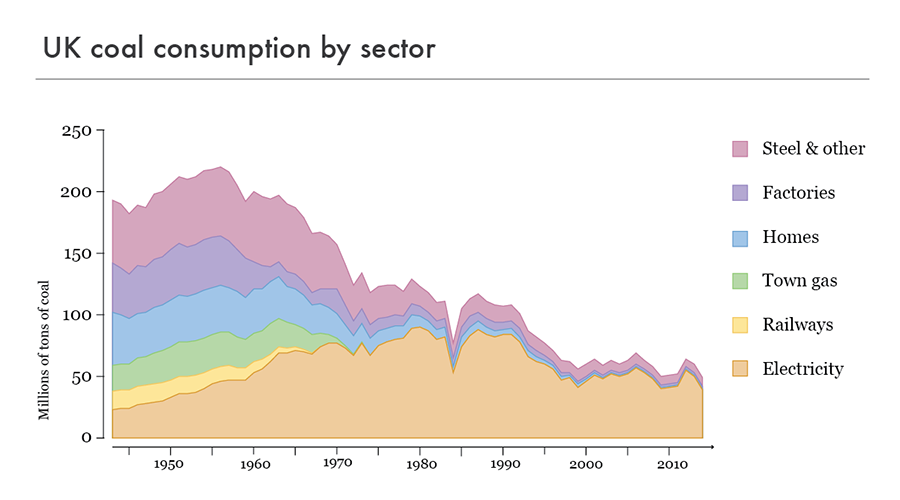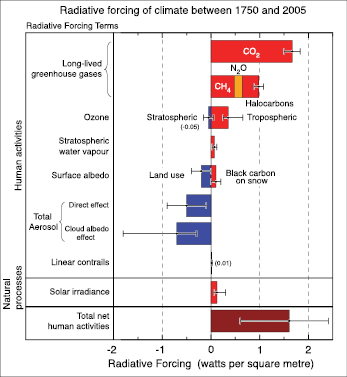After publishing my previous article showing very strong that pollution works in two different ways to affect the climate: one causing warming and the other cooling, I was asked the question: “don’t the climate models include aerosols/SO2”
The simple answer is in this graphic showing the presumed radiative forcings from the IPCC. And no you don’t need to squint, it’s not there!
Yes, it may be included in a small way in some models – particularly when it originates from volcanoes, but the IPCC do not consider SO2 to affect the climate in a significant way. THEY ARE VERY WRONG.
Because if SO2 when emitted in one causing cooling (at low levels) and when emitted in another way causes warming (when at high level), if you simply use the total SO2 being emitted (if there is a substantial amount of cooling and warming effect) then you will find a very bad correlation with SO2 as a total
However, if you were to treat the different mechanisms of release as two separate pollutants (even if the chemical is the same) and allow for both cooling and warming, then you will find a very good correlation with their actual effect.
Let’s try to put some flesh on that. Below is a graph of use of coal in the UK by sector:
 As you can see, the use in homes was fairly constant from 1945 to 1965 and then started to decline. Given that household coal use was well known for producing smogs particularly in London, we know the effect was low level and therefore would predominantly have caused cooling. That this was likely a significant cause of cooling until 1965 when the level of cooling reduced – resulting in a warming contribution from 1965-to around 2000.
As you can see, the use in homes was fairly constant from 1945 to 1965 and then started to decline. Given that household coal use was well known for producing smogs particularly in London, we know the effect was low level and therefore would predominantly have caused cooling. That this was likely a significant cause of cooling until 1965 when the level of cooling reduced – resulting in a warming contribution from 1965-to around 2000.In contrast, coal use for electricity rose from 1945 to peak in ~1990. If this produced high-level SO2 effects, then it would cause warming. So, between the peak of household use and the peak of electricity use, we probably had both a cooling and warming effect from coal in the UK. And depending on the relative scale of effect, during this period for these two uses, the net contribution could be warming or cooling.
So the effect of coal (and hence SO2) is not correlated with the total SO2 emissions (as used in the climate models) but instead we have to treat the different types of use as distinct and would expect correlation with them individually not in total.
And note: in the UK there was a political decision to stop using coal for electricity so this peak in ~1990 will be local to the UK


